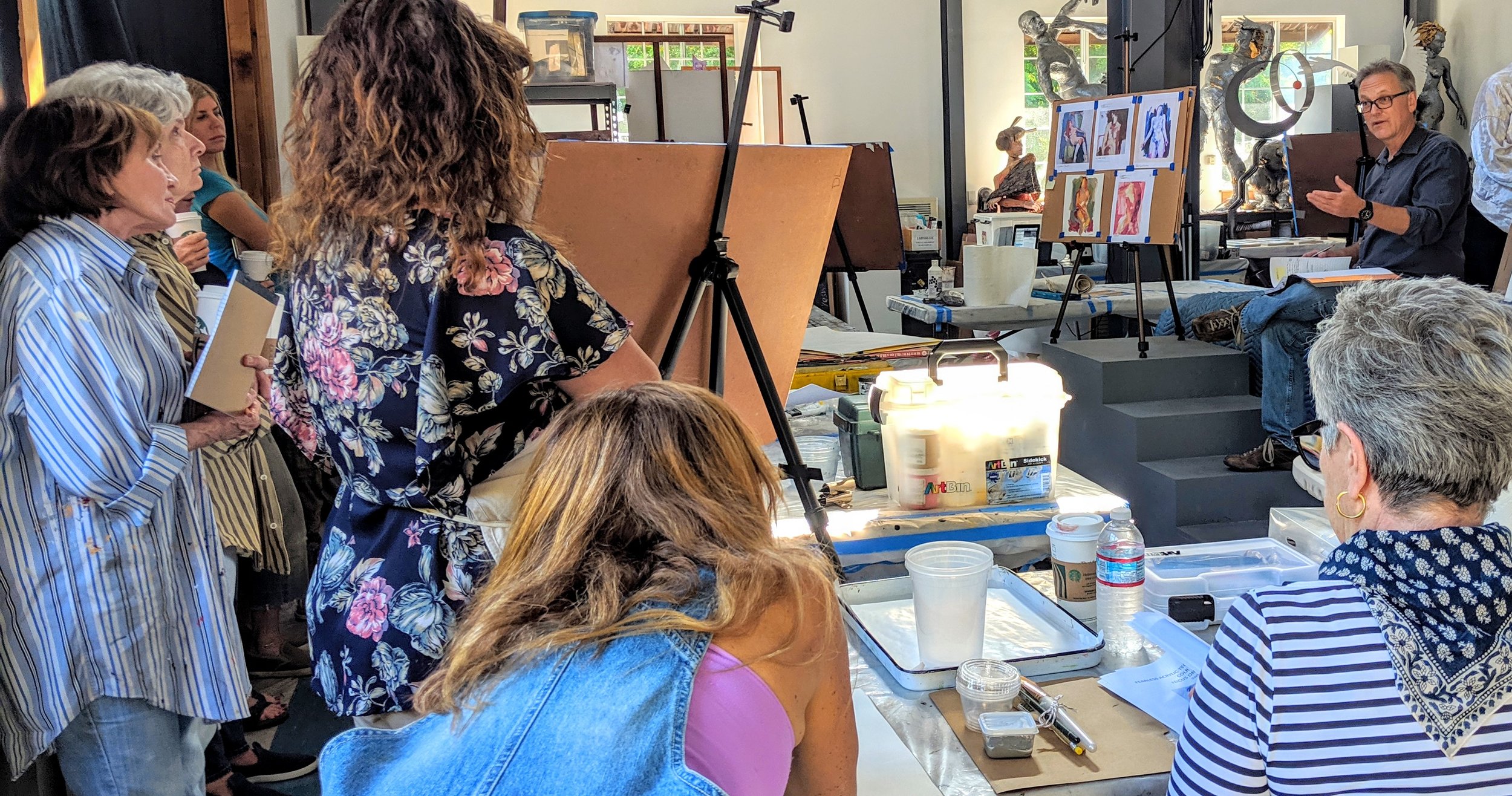THE DAY AFTER
I thought you would get a kick out of seeing all the color mixtures (and attempts) it took me to create this small painting. 10”x 8”, acrylic and pencil on wood.© 2019 David Limrite
“The quest is to keep the thing alive - the drawing and the state of grace.”
Jim Dine, Artist
The Day After
You are working really hard to loosen up your painting style and to be more spontaneous as you paint.
You have just had a really good, fun and energetic painting session. You leave the studio to attend to your daily life. Then you go back into your studio the next day to analyze your painting.
This is where your brain steps in and begins to criticize and pick your painting apart. This happens even if you love it. Our tendency, at this point, is to want to “fix”, ( see last weeks post: Eliminating The Word “Fix”), tweak and adjust the entire painting. Your brain begins to question everything you did the day before. Self-doubt creeps in.
This is not a very good mindset to begin re-working your painting with. This is not a time to over react and panic.
I stop, breathe and take some time to really look at the painting and absorb what I did yesterday. I do not pick up a brush at this point in the evaluation.
I first look for all of the things that I like about the painting. What is working. Which, is often more than I thought I was going to like. I then look for the one thing that really bothers me, and, I re work that area only.
After I have worked on that area, I look at the entire painting again to see how that one re-worked area is looking with the rest of the painting.
If I liked what happened, I then look for the next area that bothers me, I re-work that area and assess the entire painting again.
I only allow myself to re-work three areas. Often times, that is enough to get the painting to where I want it to be and still hang on to the looseness and spontaneity I am trying to achieve. If, after re-working a maximum of three areas, I am still not satisfied, I put the painting away for a few days and begin another one.
After a few days, I pull the painting back out and take another look. I only allow myself to re-work a maximum of two areas, if needed, this time.
I know that this process might sound methodical and tedious, however, it keeps me from totally destroying the looseness and spontaneity I worked so hard to achieve when I created the painting in the first place.
Give this a try and let me know if it helped.
Best,
David
AUGUST ART BARN WORKSHOP
July Art Barn Workshop: Preparing for a Painting Demonstration
The Art of the Figure:
FEARLESS ACRYLIC TECHNIQUES & CREATIVE COLOR MIXING
San Luis Obispo County (Arroyo Grande)
August 23-25, Friday - Sunday | SOLD OUT | Click to Wait List | More Details
Below are two pieces created during the July 2019 Art Barn Workshop
© 2019 Jane Feil
© 2019 Tamara Greenebaum




